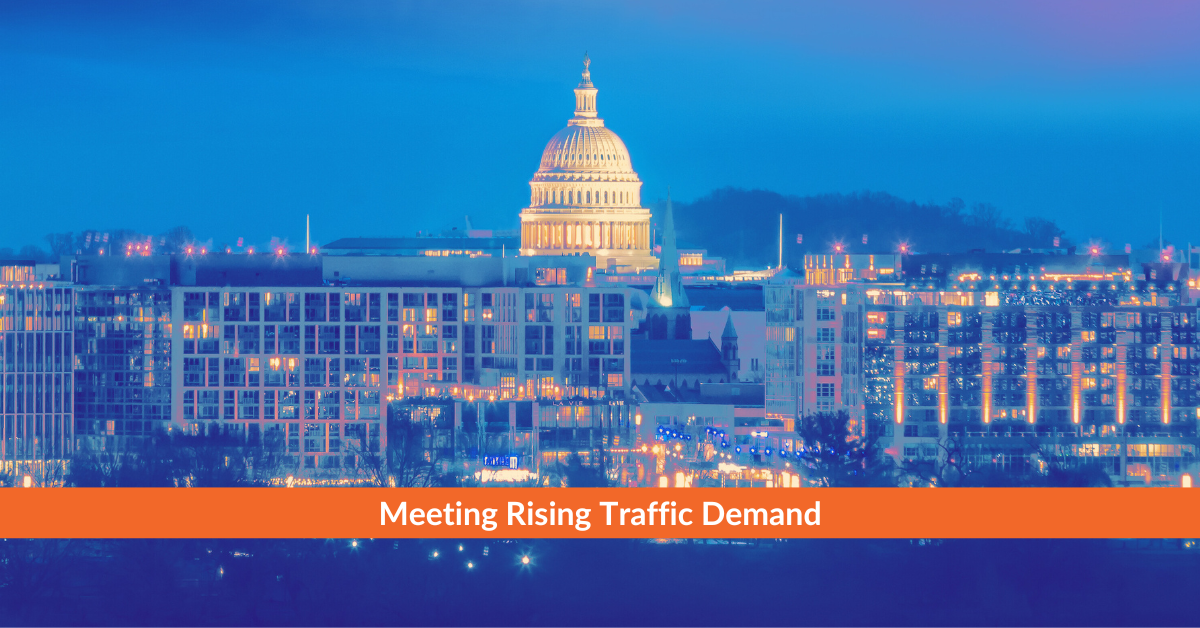Commuter exhaustion between Baltimore and Washington, D.C. is now recognized nationally. DC has been crowned with the title of worst traffic in the US, overtaking the reigning champion, Los Angeles, in average daily commute times.
Michael Manville, an urban planning professor at the University of California, Los Angeles, told ranking authority ConsumerAffairs that “congestion is oftentimes a sign of economic prosperity.”
The Northeast Corridor (NEC) is indeed a bustling economic region in the US, and we’re very familiar with traffic. The NEC is known for significant congestion on both roads and public transportation.
With populations growing again in DC, Baltimore, and New York City, traffic will only get worse. Let’s take a look at current methods for addressing overburdened and outdated infrastructure—and the reasons why innovative projects like Northeast Maglev come out on top.
Why can’t we just build more roads?
Research shows that widening roads doesn’t fix traffic for long.
The reason? The concept of “induced demand.”
It’s the classic relationship of supply and demand, explained Susan Handy, transportation planner at the University of California, Davis to Scientific American earlier this year.
Road widening projects do improve congestion initially. However, “adding capacity makes driving cheaper from the standpoint of travel time, inconvenience, and annoyance,” Handy said. “More people might [choose] to drive on the road involved, which eventually causes congestion to rebound.”
Proponents of highway expansion argue that adding lanes will not only alleviate congestion, but also enhance safety, replace aging infrastructure, and fuel economic growth.
But economists Matthew Turner and Gilles Duranton have recognized what they call the “fundamental law of road congestion” since 2009. New roads will create new drivers, resulting in the intensity of traffic staying the same.
Highway projects have price tags of billions, only for traffic congestion to keep coming back.
Environmental advocates have also raised concerns about the impact of highway expansion on air pollution and wildlife ecosystems near heavy traffic.
On the other hand, Northeast Maglev has the power to significantly reduce vehicle miles traveled in the region. By reducing car and air trips, the SCMAGLEV will also reduce highway congestion, noise pollution, pavement maintenance costs, and provide a host of additional environmental benefits.
Kelcie Ralph, a transportation planning researcher at Rutgers University, said it best: “More widening projects lock us into decades of infrastructure that doesn’t build the future we want—that doesn’t build the future I want.”
Many people choose to drive because they don’t feel like they have a choice. With Northeast Maglev, you wouldn’t have to get stuck for hours in high volume traffic on the Capital Beltway or MD-295. Northeast Maglev could get you from Baltimore to DC in just 15 minutes.
But what about existing commuter and passenger rail services?
Many critics of highway expansion projects point to services like Amtrak or regional commuter rail like the MARC train. These services are invaluable to thousands of commuters across the region.
But delays in train service are inevitable. Outside the NEC, Amtrak’s network runs mostly on host railroads owned by freight companies. These freight lines have strong influence over Amtrak’s routes, causing schedule conflicts and severe delays. Where Amtrak does own rail, infrastructure is outdated, and rail lines are falling behind.
After a substation explosion causing massive service delays along Amtrak’s routes in June of 2024, the New York Times reported that “long stretches of the system are unchanged from when the defunct Pennsylvania Railroad first electrified it a century ago. Any wholesale modernization effort would come at a tremendous cost and take more than a decade.”
“It’s staggering, just staggering, that we’re still having antique technology controlling our rails,” John Goglia, a former member of the National Transportation Safety Board, told the NYT. “That’s last century’s technology.”
Rail services are expanding and working hard to address these issues. That’s why the NEC needs extra support in the form of high-speed rail between overburdened cities, so that regional rail can breathe easier.
Unlike legacy rail, our high-speed train will run on a dedicated, brand-new guideway built exclusively for high-speed rail. The SCMAGLEV uses magnetic forces to float above the guideway, eliminating friction and allowing for ultra-high speeds. This technology isn’t the future—it’s already here, developed and owned in Japan by the Central Japan Railway Company.
Northeast Maglev would travel at speeds up to 311 mph, cutting travel time from DC to NYC to just one hour. It would reduce strain on highways and regional transit, easing congestion for everyone.
Your Voice Matters
The Northeast Corridor needs to expand beyond outdated, congested transportation options. Your support for the project is crucial to moving towards the next generation of transportation. Become an advocate for high-speed rail today.
